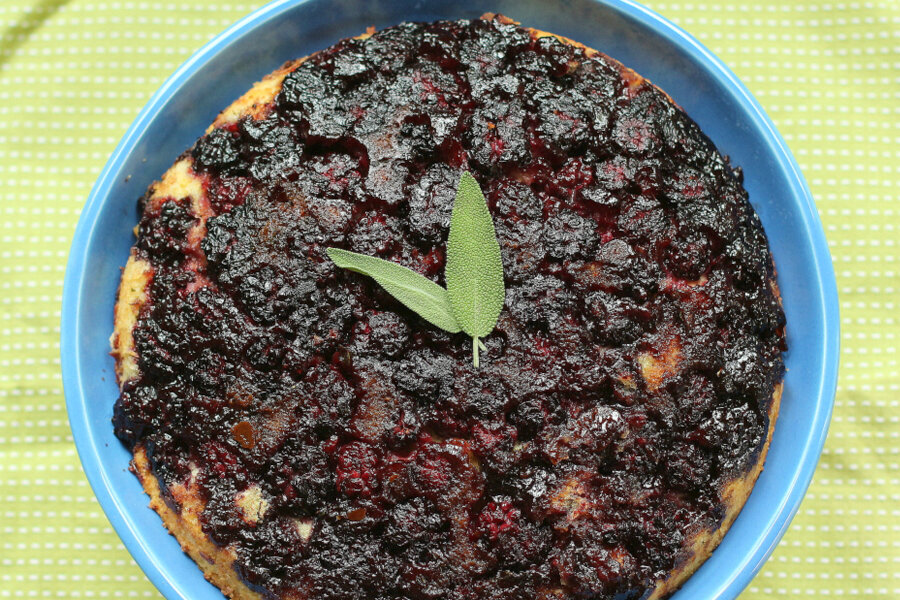Blackberry sage skillet cake
Loading...
Fruit and herbs are a wonderful combination. I’ve made Peaches Poached in Basil, a Blueberry Basil Compote, even a Strawberry Mint Vinaigrette. Blackberries and sage are a lovely pairing, the berries are sweet and the sage woodsy, but together they sing. Sage isn’t generally associated with sweet recipe, but it should be for the lovely herbaceous tone it adds.
I’ve added sage to blackberry jam for years – its one of my standard summer recipes, but I hadn’t really considered using sage in baking. I’ve been experimenting with various herbs in baking recently, and when I decided to use some fresh farmers market berries in this classic upside down cake recipe, I wanted to give sage a chance. It creates this elusive note of herbal freshness under the dark, sweet juiciness of the berries. The cake is tender and moist enough to soak in some of the juices, but not terribly sweet so the berries really shine. A bright note of lemon zest helps bring the whole together.
This cake is lovely on its own for dessert, though I could easily see it at breakfast. A dollop of whipped cream – perhaps infused with sage – or a big scoop of rich vanilla bean ice cream wouldn’t go amiss. And don’t these simple skillet cakes make an impressive presentation?
Blackberry sage skillet cake
10 tablespoons butter at room temperature
1 nice bunch of fresh sage, 5 to 6 leaves and 2 tablespoons finely chopped
1/3 cup dark brown sugar
2 cups blackberries
3/4 cups granulated sugar
2 teaspoons lemon zest
1 teaspoon vanilla
2 eggs
1-1/2 cups all-purpose flour
1-1/2 teaspoons baking powder
1/2 teaspoon salt
1/2 cup buttermilk
1. Preheat the oven to 350 degrees F.
2. Melt 4 tablespoons of butter in a 10-inch oven safe skillet over medium heat. Drop in 5 to 6 sage leaves to infuse the butter. When the butter is melted and fragrant from the sage, remove the sage leaves, squeezing them against the side of the skillet to remove as much butter as possible. Stir in the dark brown sugar and cook briefly, just until smooth and melted. Do not let it burn. Remove from the heat and stir in 1 tablespoon chopped sage. Spread the sugar mixture evenly over the skillet, then sprinkle the blackberries in an even layer over the sugar.
3. Beat the remaining 6 tablespoons of butter with the 3/4 cup granulated sugar in the bowl of a mixer until light and fluffy. Beat in 1 tablespoon of chopped sage, the lemon zest and vanilla until combined. Beat in the eggs, one at a time, blending thoroughly before adding the next egg, scraping down the sides of the bowl. Beat in the flour, baking powder and salt in two additions, alternating with the buttermilk, scraping the sides of the bowl.
4. Scrape the batter over the top of the berries and smooth the top. Bake the cake for 30 minutes, rotating the skillet half way through the cooking time, until the top is a lovely golden brown a tester inserted in the center comes out clean.
Related post on The Runaway Spoon: Strawberry ricotta cake





